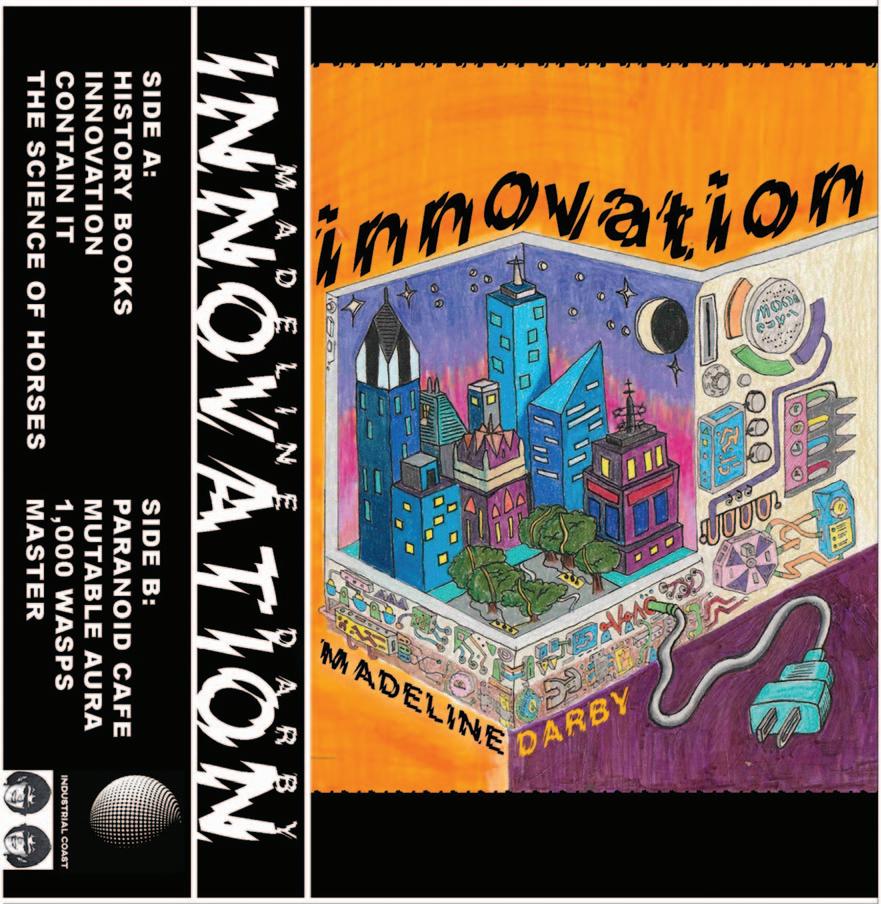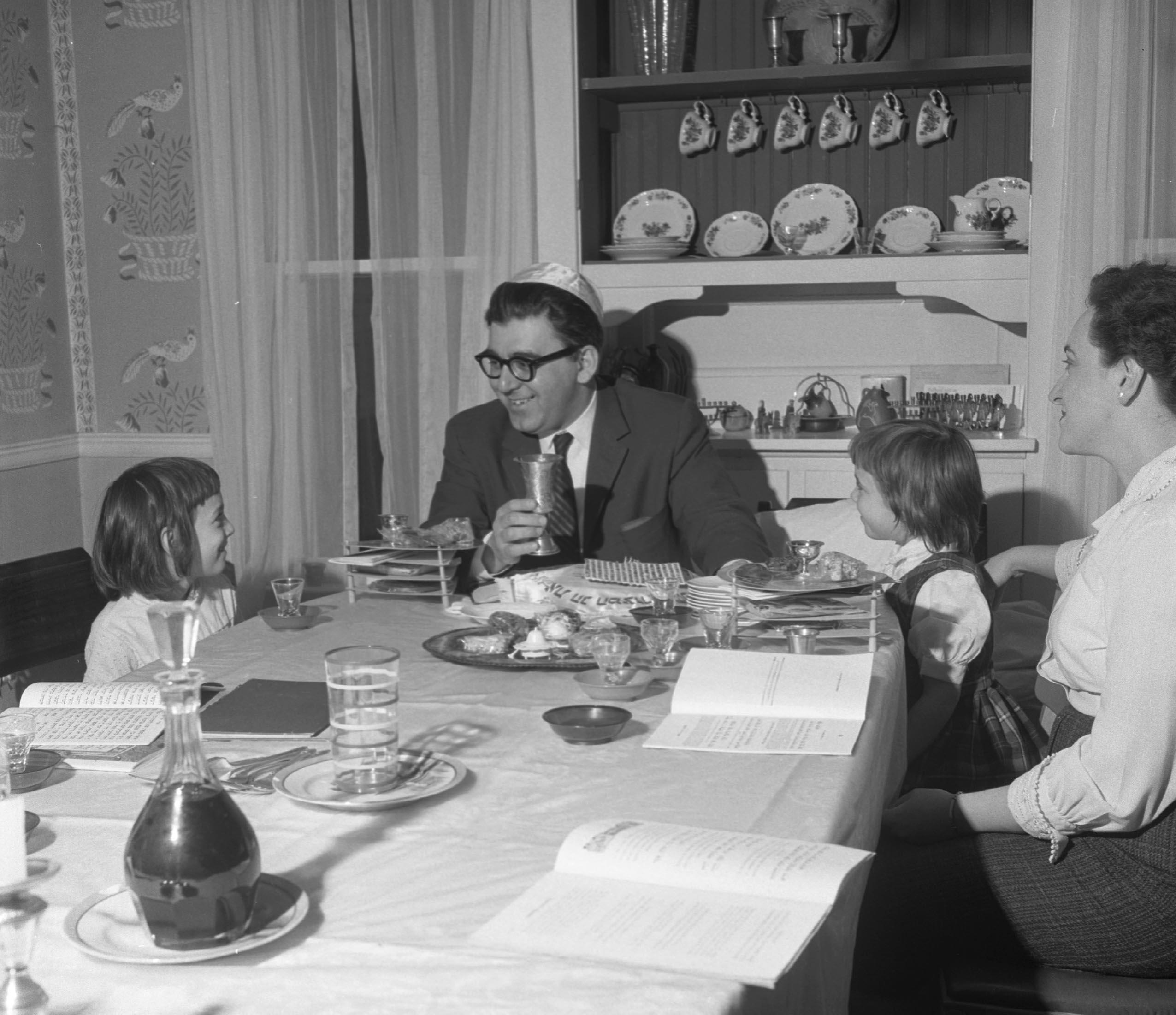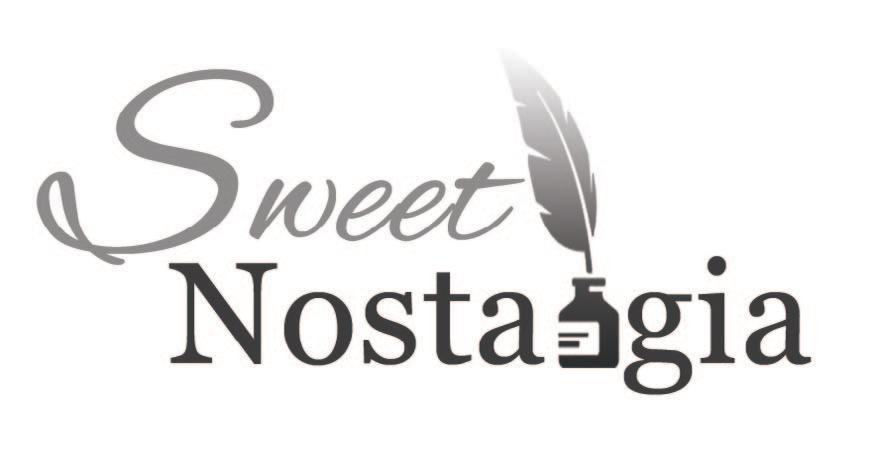
5 minute read
Upstate Beat
Not a Hologram
In lockdown, Troy electronic artist Madeline Darby embraces her creative, DIY side.
Advertisement
By Kirsten Ferguson
The new video for Madeline Darby, a Troybased experimental-electronic artist, starts with a flash of disorienting images and a persistent, monotone beat. An archaic font from the early days of home computers types out the song title, “Innovation.” Darby—whose non-stage name is Sarah—appears on the staticky screen as a disembodied head in a box, her eyes ringed in black like Alex from “A Clockwork Orange.”
The wink to old-school technology puts the video in the realm of a DIY public-access television show, while the soundtrack of clanky noises and metallic beats recalls the futureforward music of German electronic innovators Kraftwerk. It seems a bit ironic, then, that a song
with the name “Innovation”—also the title of Madeline Darby’s first full-length solo project— is presented in such a retro way.
“I hate technology,” Darby says over FaceTime, talking about how the pandemic has reduced interactions to screen versions of real human contact. “I don’t want to be living in a little box. My whole album is about wasting away in technology. I have this line in one of my songs, ‘I can feel myself rot.’ It’s like I’m just becoming a hologram. I don’t want to be a hologram. I want to be an in-flesh musician. I like performance art and going to galleries. I’m not an Instagram shopper.”
Darby, like most of us, is fed-up with being pent-up indoors. Prior to the pandemic, which shut down local music performances over a year ago, she and the Super Dark Collective— of which she and her partner Shane Sanchez are members—were putting on some of the best live music shows in the region on a weekly basis, primarily at Saratoga Springs bar Desperate Annie’s.
“I miss playing music so much and going to shows,” she says. “Just talking about it makes me jump out of my seat. It’s been a rough year. If we rely on technology to be the way we inter act with people, are we creating an invisible world to live in within a real one? I’m an extrovert who wants to be around people.”
Super Dark has since kept busy, though, putting on a YouTube television show for a while—in the vein of old-school public access shows—and planning their next moves. “The TV show was our way of saying to the bands [who played Super Dark shows], ‘We still love you and support you, don’t break up.’ That was our labor of love.”
Although the isolation of the pandemic has taken its toll on Darby—and everyone else—it sparked her creativity as well. Music during COVID-19 gave her something to do. “I just needed a project to focus on,” she says. “I needed to challenge myself.”
She and Sanchez would “let off steam” playing improvisational music together as Dominated Swine, a synth-fueled, stream-of-consciousness duo inspired by fear and paranoia. And for all her hatred of technology, Darby harnessed it to express herself musically with “Innovation,” even in an old-school way inspirational for its do-it-yourself, creative ethic.
“I have a distaste for the way technology tells you how to use it,” she says. “Like if you want to make a video, this is how you should do it.” She made beats for “Innovation” on GarageBand, sometimes running her iPad through a guitar pedal and layering the beats or looping a contact mic and running it though a guitar pedal. The track “The Science of Horses” is a catchy dystopian cover of a song by Sanchez’ Ghoul Poon project. “Paranoid Café” combines spooky spoken word about “decay, dust, maggots and meal worms” with an insistent, ominous beat and glinting metal percussion. It makes for excellent head-phone listening.
“I’m not a seasoned producer, so my stuff is raw sounding” Darby says. “In my early 20s, I was really into electronic club music, like jungle and drum and bass. I thought you had to be really proficient to make music in a specific way. Now I realize if you have an iPhone, you can make a masterpiece.”
When conditions allow, Darby expects to perform live again, backed by Sanchez and fellow Super Dark member Gary Ziroli. The trio make up a group called Thinner Friends, playing “weird, disjointed camp counselor music.” Darby also does freelance art: digital commercials and advertising, and paintings by commission. “Innovation”—mixed and mastered by local musician Paul Coleman—is available on orange-colored cassette tapes or on streaming and digital music sites.
Photo by Kiki Vassilakis


Visit madelinedarby.bandcamp.com or madelinedarby.com


The Interfaith Seder that Became a Legacy
by Karen Richman
"If you're not careful, you can turn yourself inward," a member of his congregation once said.
And that is precisely why Rabbi Avraham Soltes of Temple Sharey Tefilo started a long tradition of interfaith Passover Seders. He first initiated the effort at Sharey Tefilo, and after he moved on to other congregations, he packed the successful tradition and took it with him. He even brought the interfaith Seder to the West Point Military Academy where he served as Jewish chaplain for more than 20 years.
Rabbi Soltes was a maverick in his day, and the early '60s much like today, were times of unrest. Yet Soltes refused to entertain any notion that an interfaith Seder would not work. It was Passover, the Seder being the ritual feast that marks its beginning and its end, and it had always been one performed by a family or a community involving the retelling of the story of the liberation of the Israelites from slavery in ancient Egypt...the story told in the Book of Exodus. The Seder is the ritual feast that recounts that story, celebrates freedom, and is the most commonly celebrated Jewish ritual performed worldwide.
While many Jewish holidays revolve strictly around the synagogue, the Seder is conducted in the family home or a communal place, and it is commonplace to invite guests, strangers, or others in the community to partake. So Rabbi Soltes thought it would be wonderful to invite local church leaders and their youth groups to join us at our Seder. He was met initially with a good deal of resistance and reticence on the part of

